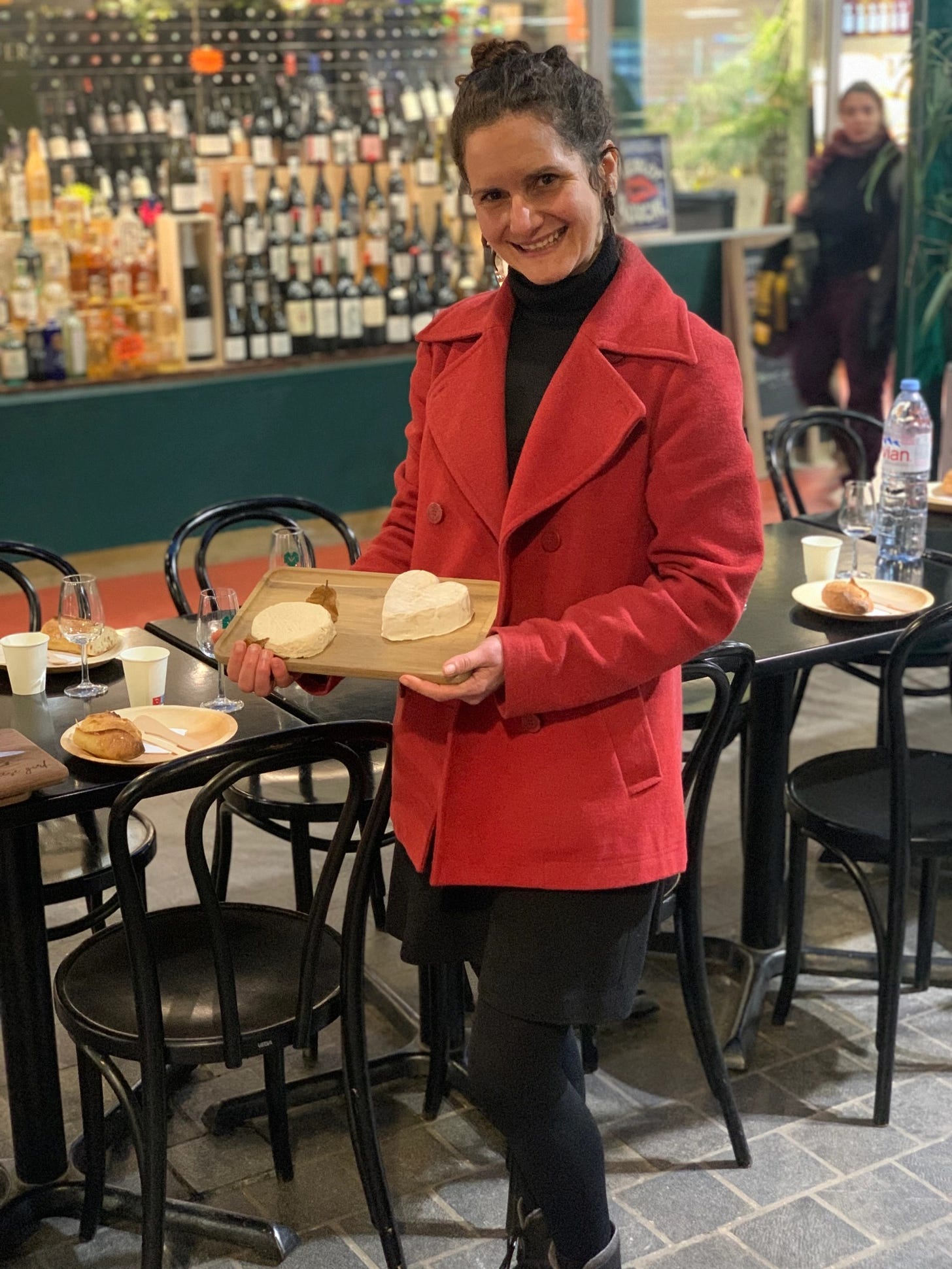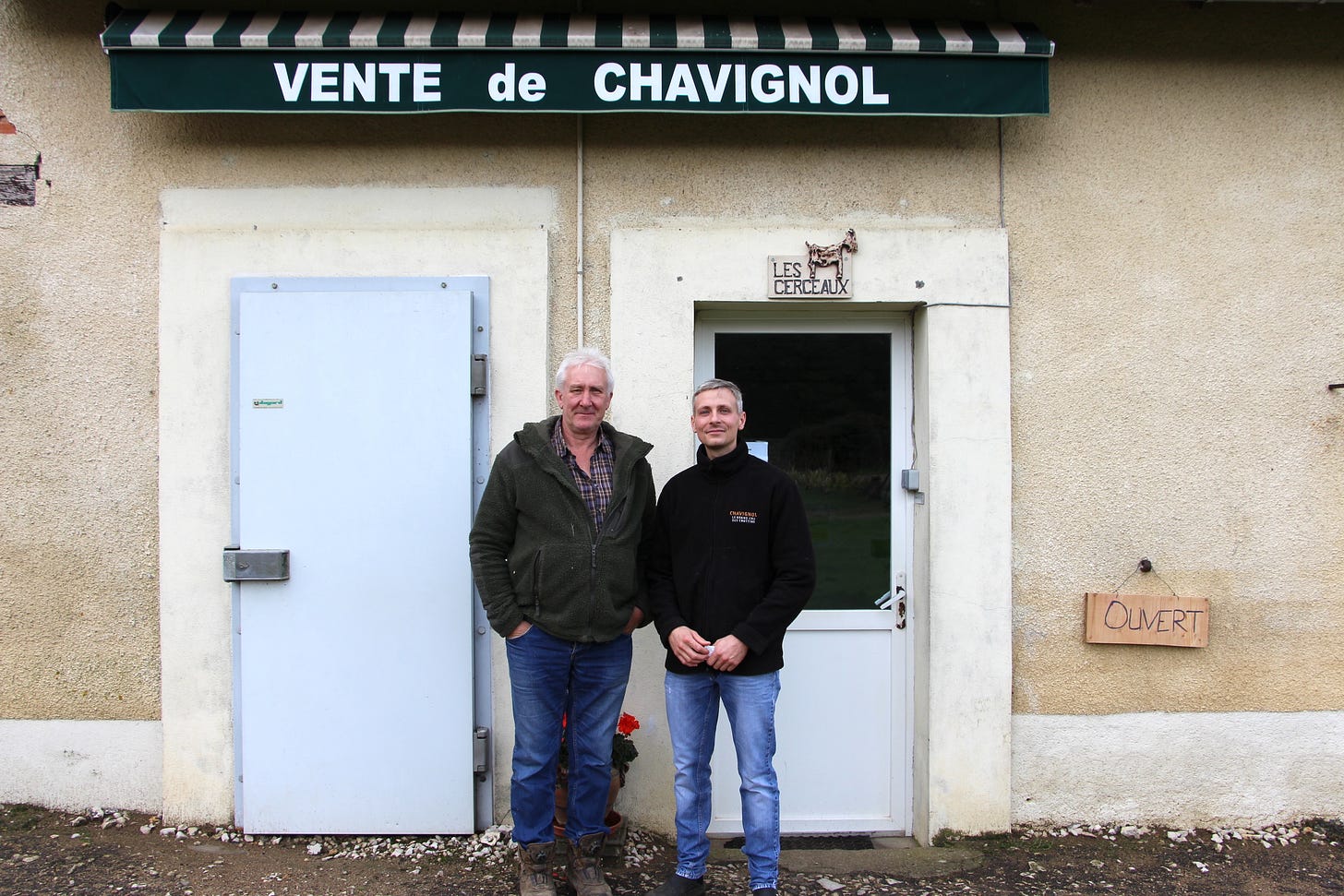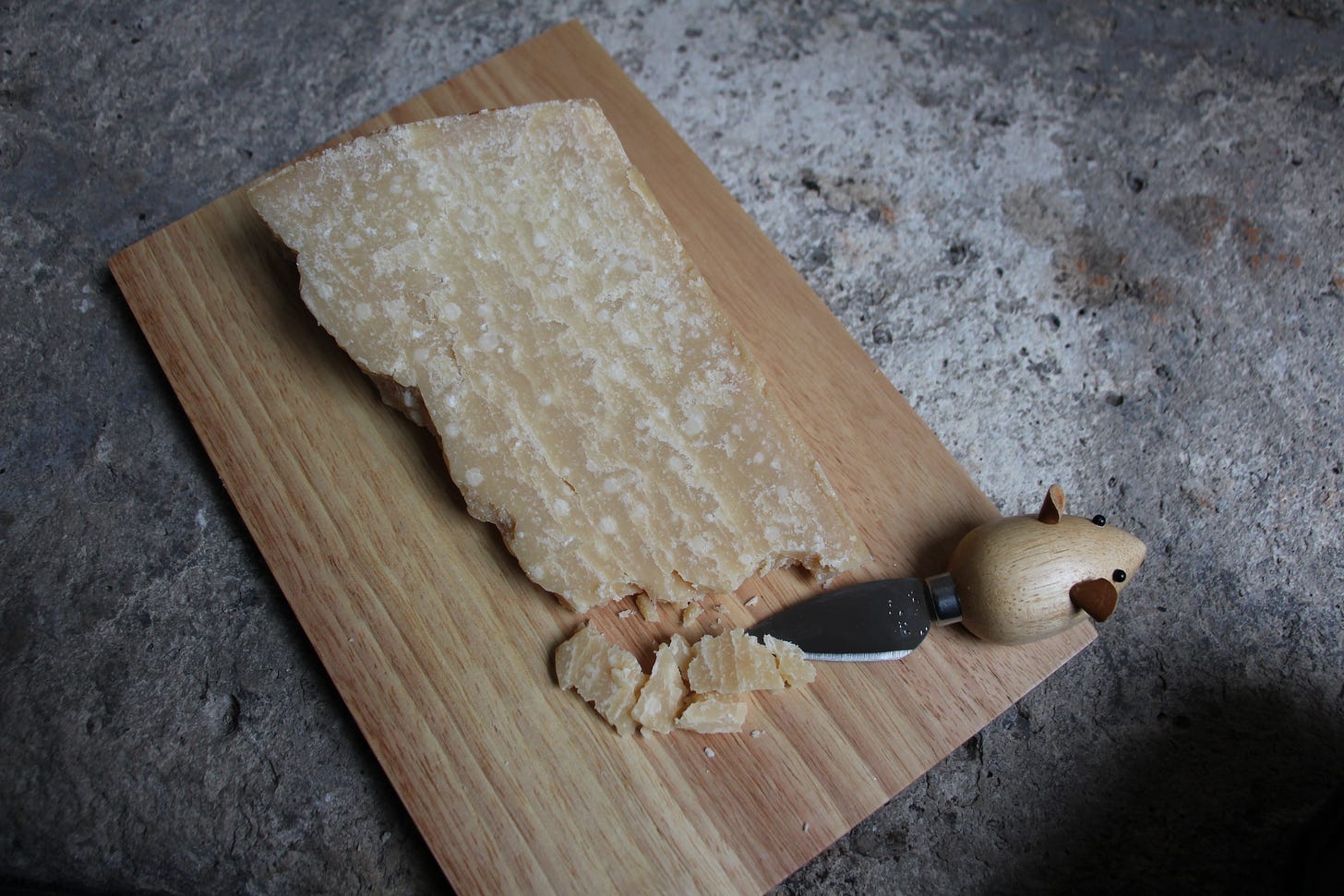Charles de Gaulle famously said that it was impossible to govern a country with 246 kinds of cheese, but these days, France is home to nearly 2,000. To help make sense of the madness, I’m launching a brand new event series to help locals and visitors taste their way through some of them.
Consider this your invitation to Taste Your Way Through the World of French Cheese!
I’ve been offering cheese tours to Parisian visitors for years, now, but this is my first event series tailored to folks who already live here. These evening tastings will take place once a month at 6pm in a picturesque 19th-century covered market. At each tasting, I’ll introduce five French cheeses, separating myth from fact when it comes to their origin stories and inviting conversation about flavor profiles, textures, and more. Whether you're a total cheese neophyte or a connoisseur looking to discover some new flavors and facts, this convivial tasting is sure to please!
Each tasting includes generous portions of five French cheeses, excellent organic bread sourced from one of my favorite local bakeries, and a glass of grower Champagne. The inaugural event will be taking place May 21 at 6pm. Sign up here to secure your spot!
Cheese of the Week
Brossauthym, also sometimes called Galoche au Thym, is a ewe's milk delicacy from the Loire Valley perfect for spring.
Ewe’s milk cheeses can be divisive or under-appreciated; those that people are familiar with are typically members of the pressed family, like Manchego or Pecorino. But ewes’ fat-rich milk is positively perfect for making soft, fresh cheeses like this one. To make it, the milk is first infused with thyme before being slowly coagulated into this delightful lactic cheese. At its best, Brossauthym has a dense, fudgy interior and a luscious, flavorful creamline just under the thin, wrinkly rind.
To discover more of my favorite cheeses, be sure to follow me on Instagram @emily_in_france, subscribe to my YouTube channel, and tune into the Terroir Podcast, where Caroline Conner and I delve into France's cheese, wine, and more one region at a time.
What I’m Eating
Bofinger is a brasserie gem out of time, delivering time-tested dishes made with precision and heart served in a positively stunning ambiance. (Seriously... even the bathroom has a stained glass window.) More on the blog.
Where I’m Going
To Avignon, to visit a dear friend.
What I’m Doing
I’m so excited to announce the next dates for TERRE/MER, the ceramics and culinary retreat I co-host in the Mediterranean seaside town of la Ciotat. This long weekend is governed by creativity and terroir, encompassing a 10-hour ceramics workshop, three locally-sourced meals a day (prepared with love by yours truly), hands-on cooking workshops, a cheese tasting (bien sûr), and more.
We'll be welcoming our next small group September 4-7. Take advantage of our Early Bird discount – a nearly 100-euro savings – by booking your spot now!
What I'm Writing
1. The first thing you need to know about Chavignol is not to call it a “crottin de Chavignol” – no matter what the sign at the fromagerie says. “A crottin could be horse poop,” says expert ager Delphine Lafond, noting that she nevertheless has to correct a lot of consumers – both French and foreign – on the apt moniker of this illustrious little cheese, France’s oldest AOP-protected chèvre. For My French Life.
2. If you’re someone who eats eggs, should you be worried about bird flu? Here’s what you need to know about bird flu and egg safety. For Organic Authority.
3. From the archives: Behind Michelin-starred Chef Hélène Darroze’s ever-present smile is a veritable tour de force of nostalgic flavors and sharp savoir-faire. For Life & Thyme.
FAQs
With the goal of bringing you the content you crave, I'm soliciting your help. What questions can I answer for you? Drop them into the newsletter chat, and I’ll answer as many as I can!
This week’s question comes from my most assiduous reader… my dad.
“i had a French friend who would leave his cheese on a board covered by glass. When he wanted a piece he would cut off a particularly fungy-looking edge and throw it out before cutting a piece. How long can you typically keep cheese under these conditions? And how do you get those nice crunchy bits (typically found in Parmigiano)?”
Two questions for the price of one… I’m game!
Cheese keeps for longer in the fridge, but I know quite a few French people – typically ones who have a garage – who store their cheese at cellar temperature instead. Either way, depending on who you ask, you can keep cheese for as long as you like. A well-made cheese will diminish in deliciousness long before it becomes dangerous, so personal taste is really going to govern whether you keep eating it as-is or upcycle it into a quiche or fromage fort.
When it comes to soft cheeses, I too tend to trim off any moldy or dried bits, though I happily eat the blue breakdown that forms on the edge of cheeses in the cheddar family like Laguiole or Cantal. When it comes to bloomy-rinded cheeses, the moment they start to smell bleachy, I demote them to cooking cheeses.
As for the second question, that crystallization you’ll find in cheeses like Parmigiano or cheddar comes from the calcification of calcium lactate or tyrosine inside or on the surface of the cheese. These solid pockets of amino acids are pretty much umami concentrate, so it’s no wonder they're so sought-after!
These crystals only form after an affineur has coaxed the cheese to perfection over the course of many months – all the more reason it’s essential to seek out your cheese from the best purveyor. Here are my favorites in Paris in arrondissements 1-7, 8-14, and 15-20!
What I'm Reading
1. There’s a certain amount of structural expectation pervading the world of American fiction, which is why reading French novels can often seem so fresh and unexpected. I frequently had no idea where Michel Houellebecq was taking me in La carte et le territoire, a story that ultimately examines human relationships: not just with art and writing, but with other people, be they family members, lovers, or friends. Houellebecq seems like he would be an awful person to know, and his writing is divisive, but I actually really enjoyed this one.
2. This profile of one of my favorite living writers. In the Atlantic.
3. This roundup of the world's favorite cheese dishes. In Matador.
A bientôt !











